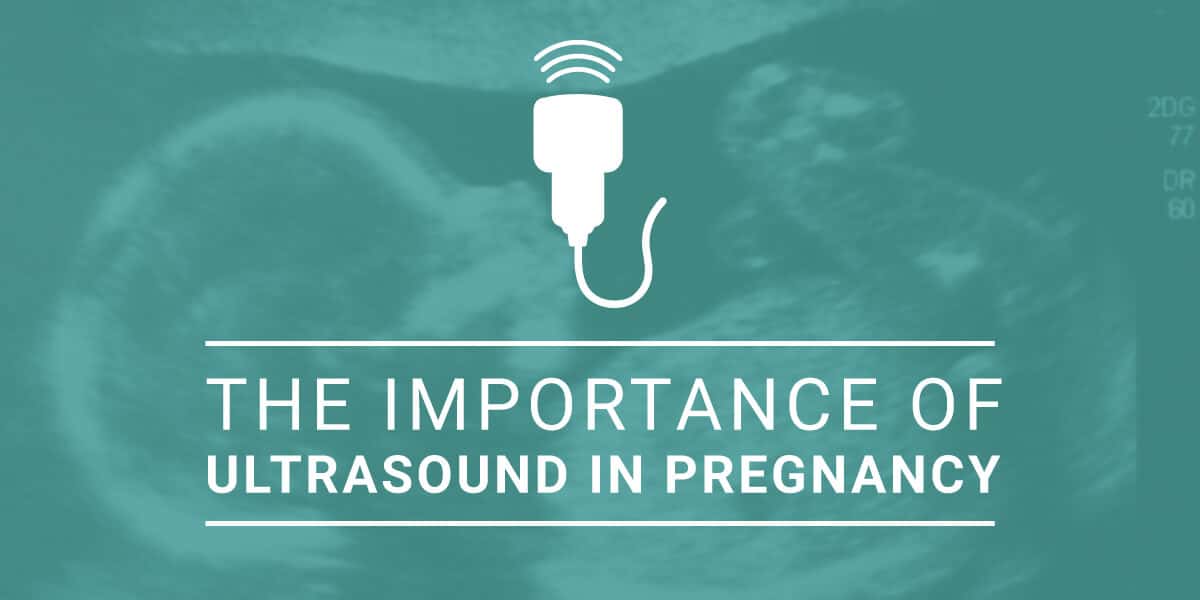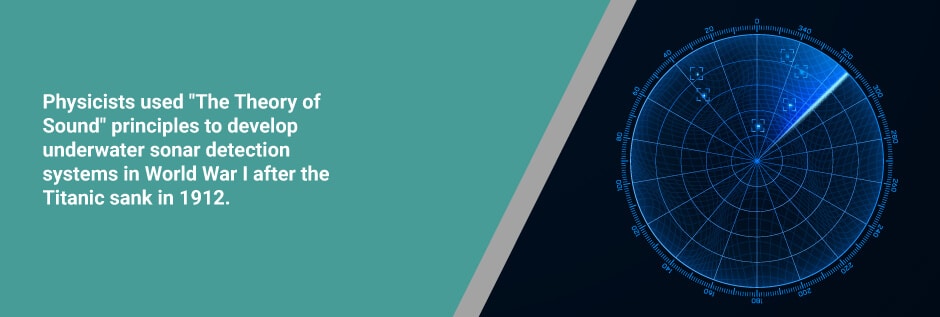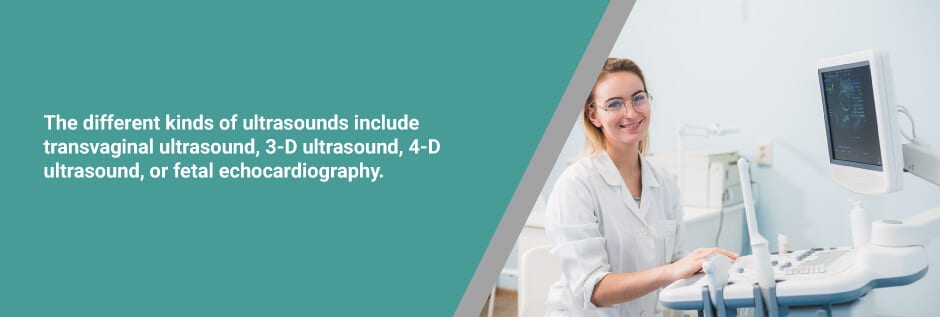
Main Takeaways:
- An ultrasound uses high-frequency sound waves to create an image of a developing baby, the mother’s placenta, and uterus, usually during the second trimester.
- An ultrasound can provide very important diagnostic information about a developing baby, including confirming the pregnancy and gestational age; checking for multiple pregnancies, congenital anomalies, and/or problems with the placenta; monitoring fetal position, fetal growth, and the level of amniotic fluid; and aiding in other tests.
- The different kinds of ultrasounds include transvaginal ultrasound, 3-D ultrasound, 4-D ultrasound, or fetal echocardiography.
Throughout the Western world, pregnant patients routinely undergo ultrasound examination (a test that uses high-frequency sound waves to image the developing baby and the mother’s placenta and uterus) during the second trimester of the pregnancy, usually between 18 and 20 weeks, as a check to determine that all things are going as they should.
This examination, while offering the parents their first look at their baby, is usually a happy event and the parents often come away with their “first picture” of their new baby. The ultrasound, however, has a very important diagnostic function that can provide critical information to the new parents regarding the health of their baby.
The purpose of this article is to briefly outline the development of ultrasound as a diagnostic tool in pregnancy, to outline some of the important diagnostic features of an ultrasound and to provide some examples of how a failure to either perform an ultrasound or communicate the results of an ultrasound can lead to tragedy.
A Brief History of an Ultrasound
The development of ultrasound imaging began in the mid-1800s with the work of the Austrian physicist and mathematician Christian Doppler who postulated that the observed frequency of a wave depends on the relative speed of the source and the observer. Fast forward to 1877 when Lord Rayleigh in England published “The Theory of Sound” which first described sound wave as a mathematical equation, thus forming the basis of future practical work in acoustics.
Physicists used these principles to develop underwater sonar detection systems for underwater navigation by submarines in World War I after the Titanic sank in 1912. The 1930s saw the construction of pulse-echo ultrasonic metal flaw detectors, which were used to check on the integrity of metal hulls of large ships and the armor plates of battle tanks.
In the mid-1950s Dr. Ian Donald in Glasgow and other physicians in the US and Japan began adapting this technique to diagnose medical conditions (at that time tumors). Research into this diagnostic modality and development of more reliable and sophisticated imaging machines and techniques took off in the mid-1960s such that by the early 1970s real-time scanners became more and more available. Technological advancements continued such that today sophisticated diagnostic techniques are available and routinely employed throughout the Western world.
Diagnostic Uses of an Ultrasound
Ultrasound is used today to assess the developing fetus, and the uterus and placenta, in order to ensure proper fetal and uterine/placental development. On its most basic level, ultrasound imaging is used to assess a developing pregnancy for the following:
- Confirm the Pregnancy
- Gestational Age – A “normal” pregnancy is popularly thought of as 40 weeks gestation but, in medical terms, a term pregnancy is anywhere from 37 to 41 weeks. It is important to verify the gestational age of the developing fetus for a number of reasons. For example, the growth of the baby will be measured against well-established growth charts to ensure normal development. Gestational age will be verified against the dates provided by the mother regarding her last menstrual period in order to confirm the due date and ensure that the baby is not delivered either too early or too late.
- Check for Multiple Pregnancies (twins, triplets etc) – a pregnancy with multiple babies carry special risks and must be monitored on a regular basis. Complications such as a “twin to twin transfusion” (see the discussion of this problem in our blog on this site) and cervical incompetence require prompt attention if complications are to be avoided.
- Problems with the Placenta – during pregnancy the position of the placenta within the uterus can be vitally important to the health of both the baby and, in some circumstances, the mother. An ultrasound can determine complications such as:
- Placenta Previa – is a situation in which the placenta is lying unusually low in the uterus, next to or covering the cervix. It is not uncommon for the placenta to be relatively close to the opening of the cervix early in pregnancy and to “move up” the uterine wall as the uterus grows with the baby. If it is still lying very low at the time of labor, however, it can result in catastrophic bleeding which can injure both mother and baby. An ultrasound can help determine if the situation exists such that delivery by cesarean section is required.
- Vasa Previa – is a condition in which babies’ blood vessels cross or run near the cervix. These vessels are at risk of rupture when mother’s membranes rupture, as they are unsupported by the umbilical cord or placental tissue. Patients with vasa previa may require prolonged hospitalization during the pregnancy and cesarean section delivery.
- Placenta Accreta – is a condition in which the blood vessels and other parts of the placenta grow too deeply into the uterine wall. This can be a problem because the placenta normally detaches from the uterine wall after childbirth. With placenta accreta, part or all of the placenta remains firmly attached. This can cause severe blood loss after delivery.
- Placenta Increta – is a condition in which the placenta invades the muscles of the uterus or.
- Placenta Percreta – is a condition in which the placenta grows through the uterine wall.
- Monitor Fetal Position – During delivery it can be important to know the baby’s position (breech, transverse, cephalic, or optimal) because it can affect the method of delivery.
- Check for Congenital Anomalies – Many parents will want to know if their baby suffers from any congenital or genetic problems so they can terminate the pregnancy or prepare for the difficulties associated with the particular problem.
- Monitor Fetal Growth – If the growth of the baby falls off expected norms this can be indicative of problems with the placenta and\or problems with the health of the baby. Either way, early intervention may be required in order to deal with the problem.
- Monitor the Level of Amniotic Fluid – Amniotic fluid is produced by the fetus and either too much or too little amniotic fluid may be indicative of problems with pregnancy which may require intervention.
- Aid in Other Tests – Tests such as amniocentesis can be performed with much greater safety when guided by ultrasound.
Types of Ultrasound
Different types of ultrasound imaging are used for different purposes. The different kinds of ultrasound available include:
- Transvaginal ultrasound
- 3-D ultrasound
- 4-D ultrasound (A 4-D ultrasound is used to produce real-time images of the baby)
- Fetal echocardiography
A transvaginal ultrasound is done when producing a clearer image is necessary for diagnostic purposes.
Unlike a traditional 2-D ultrasound, a 3-D ultrasound allows the doctor to see the width, height, and depth of the fetus and your organs. This form of ultrasound is used to increase diagnostic accuracy.
This form of ultrasound is used in the diagnosis of congenital heart defects.
Uses of Ultrasound Post Delivery
Ultrasound is sometimes used in the diagnosis of problems after the delivery of the baby. It is not as useful as MRI or CT imaging to detect the presence or type of hypoxic-ischemic injury in the newborn brain, but it is very useful in the diagnosis of brain hemorrhage and to do an initial assessment of brain anatomy to determine if there are any changes to the anatomy suggestive of prior insult.

John McKiggan, QC has represented clients in pediatric and adult injury claims that have resulted in multi-million dollar awards. In recognition of his accomplishments, John has been honoured by his peers, who elected him president of the Atlantic Provinces Trial Lawyers Association. He has also been named Queen’s Counsel, a designation recognizing exceptional professional merit. John has been selected for inclusion in the Best Lawyers in Canada in the field of personal injury law, he is listed in the Canadian Legal Lexpert Directory and has been named a local litigation star by Benchmark Litigation Canada.




